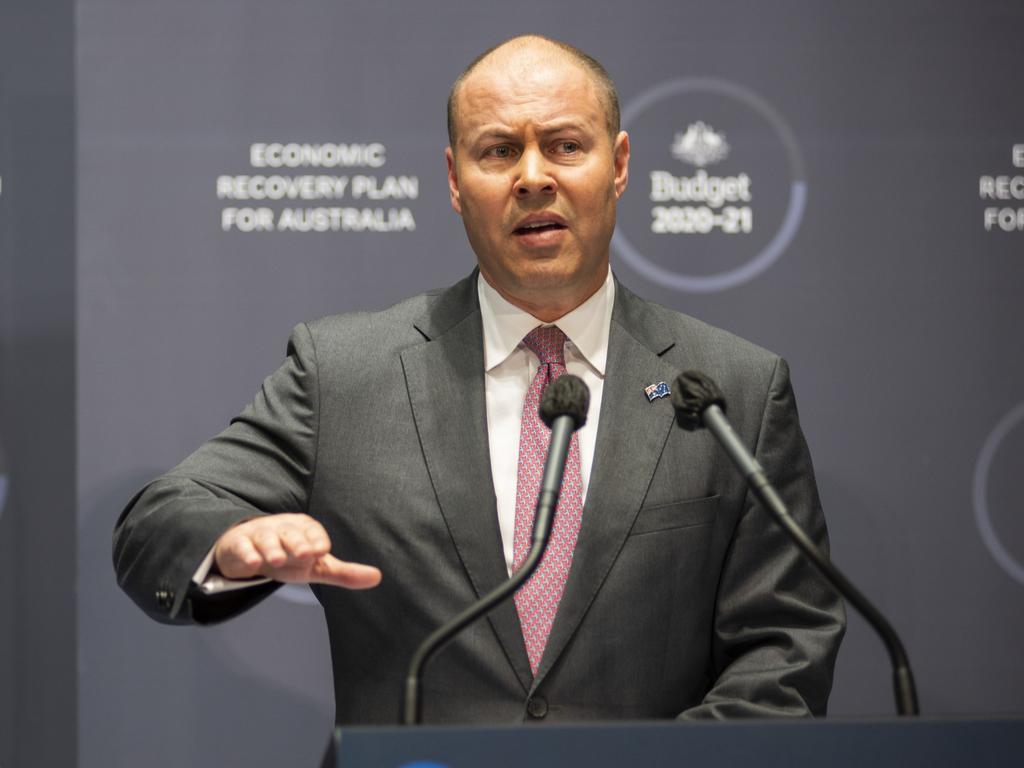Budget 2020: JobMaker Hiring Credit to to create 450,000 jobs for young people
Employers who take on an unemployed young person will be eligible for a $200-a-week wage subsidy.

Employers who take on an unemployed young person will be eligible for a $200-a-week wage subsidy for the next 12 months under a $4bn scheme designed to create 450,000 jobs.
The JobMaker Hiring Credit, to be made available from Wednesday, is a key feature of the government’s bid to drive down the unemployment rate, which Treasury now forecasts will peak at 8 per cent in December.
Employers will receive $200 a week if they hire someone aged 16 to 29, and $100 a week if they take on an eligible employee aged 30 to 35 years. Eligible employees will be required to work a minimum of 20 hours a week, and must have received the JobSeeker, Youth Allowance or parenting payment for at least one of the previous three months.
Employers will need to demonstrate an increase in overall employee headcount and payroll for each additional new position created. All employers, apart from the major banks, will be able to apply for the subsidy.
The hiring credit will be able to be claimed quarterly in arrears by the employer from the Australian Taxation Office from February 1, 2021. Spruiking the scheme in his budget speech, Josh Frydenberg said having a job meant economic security, independence and opportunity, and “we can’t let this COVID recession take that away”.
As revealed in the budget lead-up, the government will spend $1.2bn in wage subsidies for 100,000 new apprentices and trainees over the next 12 months.
Employers will get a 50 per cent subsidy, up to $7000 per quarter, of the wages paid for new apprentices and trainees until September 30, 2021.
The government will also spend $49.51m to fund an additional 14,485 places in the Skills for Education and Employment program to ensure new job seekers who lack basic language, literacy and numeracy skills can access training and support. Treasury estimates the unemployment rate will peak at 8 per cent in December quarter 2020, an improvement on the mid-year estimate of 9.25 per cent.
Treasury forecast the jobless rate would fall to 7.25 per cent by July 2021 and 6.5 per cent by mid-2022 as economic activity recovers. It is predicted to reach near pre-pandemic levels of 5.5 per cent by the June quarter in 2024.
However, Treasury concedes the jobless rate could remain “persistently higher than forecast” due to the labour market facing headwinds from weak demand, ongoing business restructuring and international border closures. “The outlook for the labour market and the unemployment rate is unusually uncertain,” it says.
“People have returned and will continue to return to work in a number of different ways. Some people who became unemployed or left the labour force altogether at the start of the COVID-19 pandemic will re-enter work, if they haven’t already.
“Others who remained employed but had their hours reduced will increase their hours worked. The level of employment growth, the unemployment rate and participation rate are all potentially subject to large movements in a short space of time — something that has been observed over recent months.”
Treasury says that even if developments in the broader economy and aggregate labour demand evolved as forecast, the unemployment rate in the December quarter 2020 could be between 7.25 per cent and 9 per cent.







